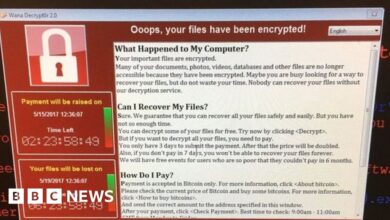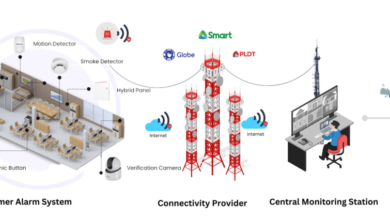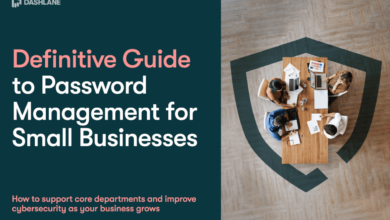
Change Your Password Day A Cybersecurity Message
Change Your Password Day professes a cybersecurity message we all need to hear. It’s not just about changing your passwords; it’s about understanding the real risks of weak or outdated logins. We’re talking about protecting your personal data, your finances, and even your identity from the ever-growing threat of cybercriminals. This post dives into the why, how, and what you can do to strengthen your online security.
From the basics of creating strong passwords to understanding the latest threats like phishing and brute-force attacks, we’ll cover it all. We’ll also explore practical strategies for implementing multi-factor authentication and using password managers safely. Get ready to boost your digital defenses!
The Importance of Password Changes: Change Your Password Day Professes A Cybersecurity Message
In today’s digital world, our passwords are the gatekeepers to our personal information, financial accounts, and online identities. Failing to update them regularly leaves us vulnerable to a range of security threats. Understanding the importance of password changes is crucial for maintaining a strong online defense.Regular password updates are not merely a security best practice; they’re a necessity in the face of ever-evolving cyber threats.
Outdated passwords are significantly more susceptible to compromise. Hackers employ various methods, from brute-force attacks (trying numerous password combinations) to sophisticated phishing campaigns and data breaches, to gain access to accounts. The longer a password remains unchanged, the greater the likelihood it will be exposed or cracked.
Risks Associated with Outdated Passwords
Outdated passwords expose users to a multitude of risks. Breached databases containing old passwords are frequently sold on the dark web. Hackers can use these lists to attempt logins to various accounts, a technique known as credential stuffing. Furthermore, even if a specific password hasn’t been directly compromised, its vulnerability increases over time due to advancements in password-cracking techniques and the increasing computing power available to attackers.
A password that was considered strong five years ago might be easily cracked today. This risk is amplified if the password is reused across multiple accounts – a single breach can compromise numerous online services.
Benefits of Regular Password Updates
Regular password changes significantly reduce the risk of unauthorized access. By updating passwords frequently, you limit the window of opportunity for attackers to exploit vulnerabilities. This proactive approach minimizes the potential damage from a successful attack, as the attacker will only have access for a limited period. Furthermore, regular password updates encourage the use of stronger, more complex passwords, further bolstering your online security.
Change Your Password Day is a great reminder to boost our digital security, and it got me thinking about how secure our application development processes are. Building robust apps, like those discussed in this article on domino app dev the low code and pro code future , requires careful consideration of security from the ground up. Ultimately, strong passwords are just one piece of a larger puzzle in maintaining a secure online presence.
This strengthens your overall security posture and reduces the chances of falling victim to various cyber threats.
Real-World Consequences of Weak or Unchanged Passwords, Change your password day professes a cybersecurity message
The consequences of weak or unchanged passwords can be severe. Consider the 2017 Equifax data breach, where millions of individuals had their personal information exposed due to a vulnerability related to a weak password. This resulted in identity theft, financial losses, and significant reputational damage for the company. Similarly, numerous high-profile social media accounts have been compromised due to weak or reused passwords, leading to the spread of misinformation and reputational harm for the individuals involved.
These real-world examples underscore the critical importance of implementing strong and regularly updated password practices.
Password Management Strategies
It’s crucial to choose a password management strategy that suits your needs and technical capabilities. Below is a comparison of different approaches:
| Strategy | Security Level | Complexity | Convenience |
|---|---|---|---|
| Using a single, strong password for all accounts | Low | Low | High |
| Using unique, easily remembered passwords for each account | Medium | Medium | Medium |
| Using a password manager | High | High | High |
| Writing passwords down | Very Low | Low | High |
Effective Password Practices
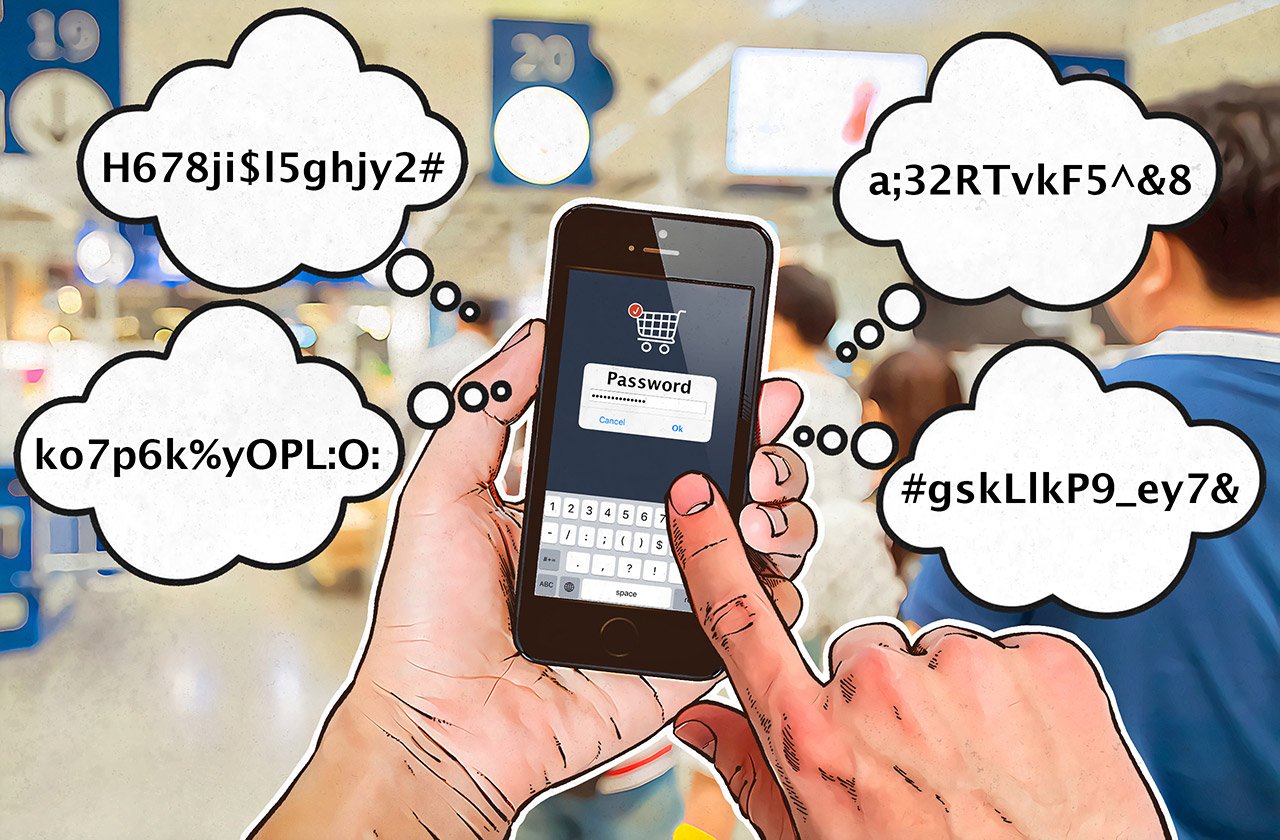
Choosing and managing passwords effectively is crucial for maintaining online security. Weak or reused passwords are the easiest entry points for cybercriminals, leading to data breaches and identity theft. This section will Artikel best practices for creating strong, unique passwords and utilizing security tools to enhance your protection.
Strong passwords are the first line of defense against unauthorized access. They should be complex, unpredictable, and unique to each online account. Avoid using easily guessable information like birthdays, pet names, or common words. Instead, aim for a combination of uppercase and lowercase letters, numbers, and symbols.
Password Creation Best Practices
Creating robust passwords requires a strategic approach. Simply memorizing a long string of characters isn’t enough; it needs to be truly random and resistant to common cracking techniques. Here’s how to create a strong password:
- Length: Aim for at least 12 characters. Longer passwords are exponentially harder to crack.
- Variety: Incorporate a mix of uppercase and lowercase letters, numbers, and symbols (!@#$%^&*). The more diverse the characters, the stronger the password.
- Uniqueness: Never reuse the same password across multiple accounts. If one account is compromised, attackers could gain access to others.
- Avoid Personal Information: Don’t use easily guessable information like birthdays, names, or addresses.
- Use a Password Generator: Many password managers offer built-in generators to create truly random and complex passwords.
Password Manager Security Implications
Password managers are tools designed to securely store and manage your passwords. While they offer significant convenience and security improvements, it’s essential to understand their implications.
The security of a password manager relies on the strength of its master password and the security measures implemented by the provider. Choosing a reputable password manager with strong encryption and security protocols is paramount. Master password security is crucial, as compromising it would grant access to all your stored passwords. Never share your master password with anyone.
Multi-Factor Authentication (MFA) Importance
Multi-factor authentication (MFA) adds an extra layer of security beyond just a password. It requires multiple forms of verification to access an account, making it significantly harder for attackers to gain unauthorized access, even if they obtain your password.
MFA typically involves using a combination of something you know (password), something you have (phone, security key), and something you are (biometrics like fingerprint or facial recognition). Enabling MFA wherever possible significantly reduces the risk of account compromise.
Password Strength Infographic
The infographic visually represents password strength using a tiered system. It’s a simple bar graph with four levels: Weak, Moderate, Strong, and Very Strong. Each level is represented by a different color bar, progressing from red (Weak) to green (Very Strong).
The horizontal axis represents password length (in characters), ranging from 1 to
20. The vertical axis shows the relative strength. The Weak bar ends at 8 characters, Moderate at 12, Strong at 16, and Very Strong extends beyond 16 characters. Each bar includes an icon: a broken padlock for Weak, a slightly damaged padlock for Moderate, an intact padlock for Strong, and a padlock with a shield for Very Strong.
Below each bar, text indicates the level and a brief description. For example, “Weak: Easily guessable,” “Strong: Highly resistant to cracking attempts.”
Understanding Cybersecurity Threats
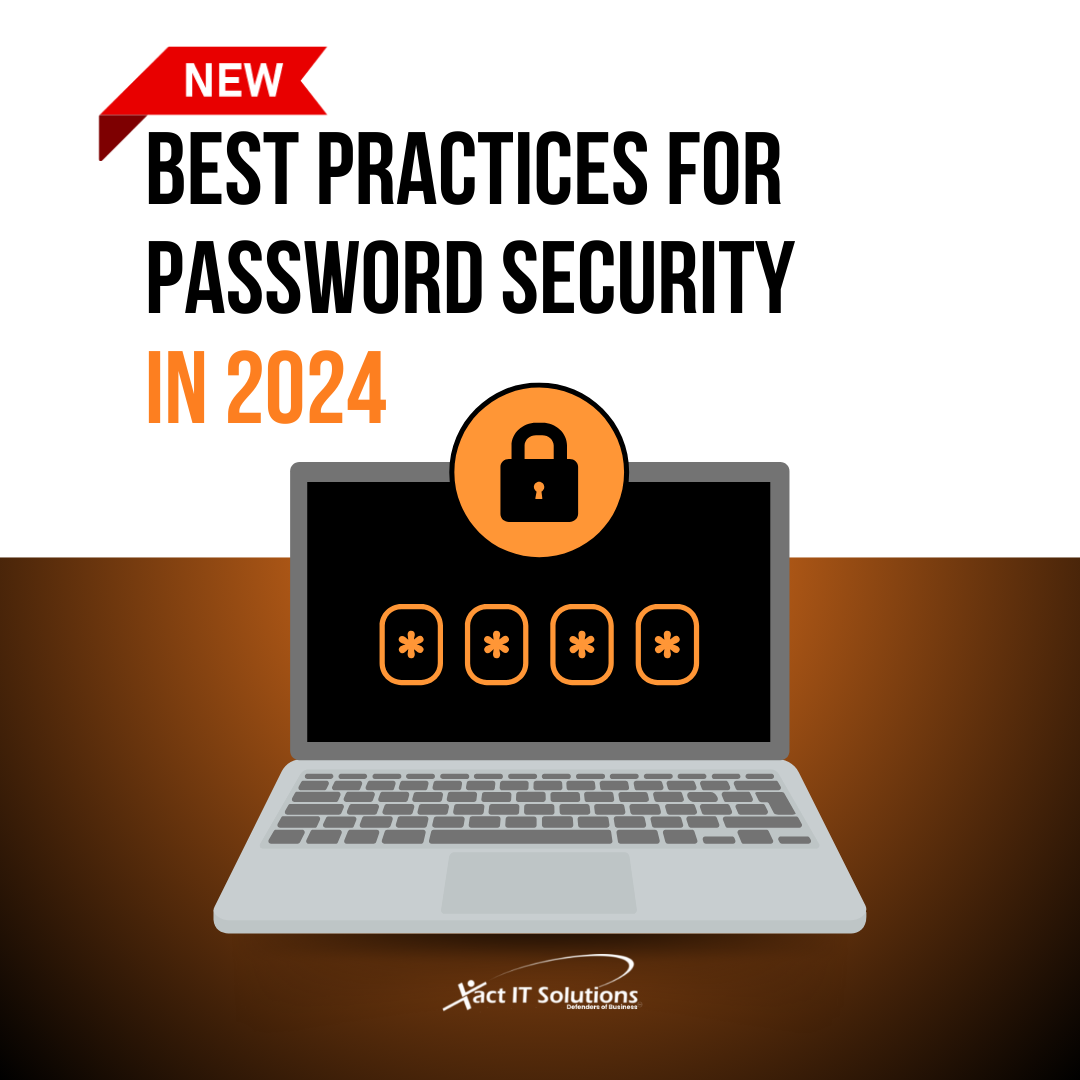
Weak passwords are the gateway to a world of cyberattacks. They’re the low-hanging fruit for malicious actors, offering easy access to your personal data, financial accounts, and more. Understanding the common threats and how they exploit weak passwords is crucial for bolstering your online security. This section will explore several prevalent attack vectors and offer practical steps to mitigate the risks.
Types of Cyberattacks Targeting Weak Passwords
Several common cyberattacks specifically target weak passwords. These attacks leverage vulnerabilities in password security to gain unauthorized access to systems and data. Understanding the mechanisms behind these attacks is critical in developing effective defensive strategies. For example, a password like “password123” is trivially easy to guess or crack, while a strong, complex password significantly increases the difficulty for attackers.
Phishing, Brute-Force Attacks, and Keyloggers: A Comparison
Phishing, brute-force attacks, and keyloggers represent distinct but equally dangerous methods used to compromise password security. Phishing relies on social engineering to trick users into revealing their credentials. Brute-force attacks use automated systems to try countless password combinations until the correct one is found. Keyloggers secretly record every keystroke a user makes, including passwords. The differences lie in their approach: phishing is deceptive, brute-force is exhaustive, and keylogging is covert.
A successful phishing attack relies on user error, while brute-force attacks depend on computational power and a weak password. Keyloggers, on the other hand, work silently in the background, requiring no user interaction beyond installing the malicious software.
Protecting Yourself from Cyberattacks
Taking proactive steps to protect yourself from these attacks is essential. A multi-layered approach combining strong passwords with other security measures is the most effective strategy.
- Use Strong Passwords: Employ complex passwords with a mix of uppercase and lowercase letters, numbers, and symbols. Consider using a password manager to generate and securely store these passwords.
- Enable Two-Factor Authentication (2FA): This adds an extra layer of security by requiring a second verification method, such as a code sent to your phone, in addition to your password.
- Be Wary of Suspicious Emails and Links: Never click on links or open attachments from unknown senders. Verify the sender’s identity before interacting with any communication.
- Install and Update Anti-Malware Software: Regularly update your antivirus and anti-malware software to protect against keyloggers and other malicious programs.
- Regularly Change Passwords: Change your passwords periodically, especially for sensitive accounts.
- Educate Yourself: Stay informed about the latest cybersecurity threats and best practices.
Social Engineering and Weak Password Security
Social engineering techniques manipulate individuals into divulging sensitive information, including passwords. Attackers often exploit human psychology by building trust or creating a sense of urgency. For instance, a phishing email might impersonate a bank, urging the recipient to update their account information by clicking a malicious link. This link often leads to a fake login page designed to steal the user’s credentials.
The success of social engineering hinges on the victim’s trust and lack of awareness. Weak passwords exacerbate this vulnerability, as they are easier to obtain through social engineering tactics. A strong password, combined with skepticism towards unsolicited communications, significantly reduces the risk of falling prey to such attacks.
Communicating the Cybersecurity Message
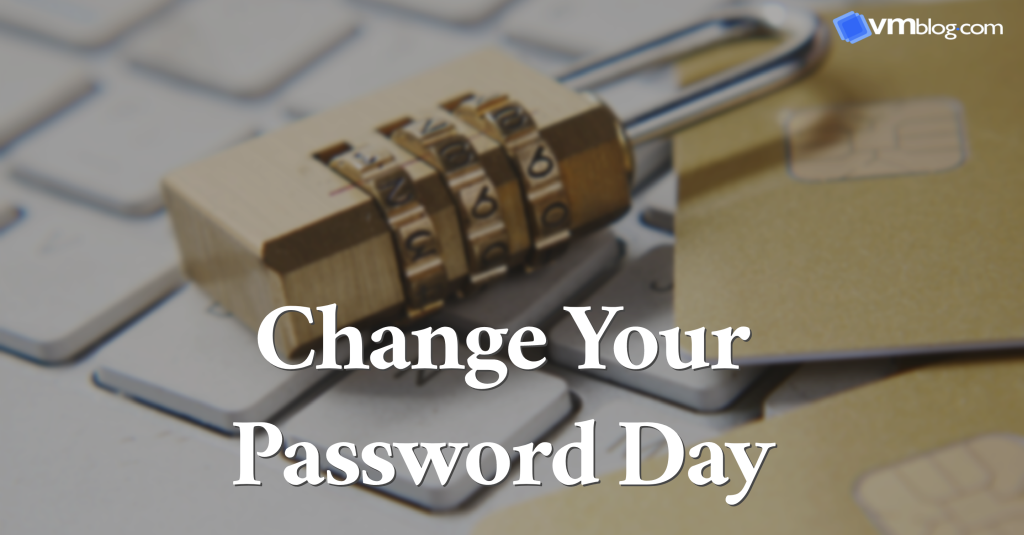
Getting the word out about password security is crucial. We’ve covered
- why* strong passwords and regular changes are important, but now let’s focus on
- how* to effectively communicate this vital message to a broad audience. A strong cybersecurity posture relies not only on individual actions but also on widespread awareness and understanding.
Effective communication requires a multi-pronged approach, leveraging various channels and formats to reach different demographics and levels of technical understanding. This involves creating engaging content that is both informative and easily digestible.
Social Media Post Promoting Regular Password Changes
A compelling social media post needs to be short, attention-grabbing, and actionable. Here’s an example:
Image: A stylized graphic showing a padlock being updated with a new, strong key. The padlock could be brightly colored and modern, conveying a sense of security without being overly serious. The key could be visually distinct, perhaps with unique shapes or colors, symbolizing a complex and secure password.
Text: “Change Your Password! It’s Change Your Password Day! Don’t let weak passwords unlock your digital life to cyber threats. Use unique, strong passwords for each account and change them regularly. #Cybersecurity #PasswordSecurity #ChangeYourPasswordDay”
Educational Video Explaining Password Security Best Practices
A short, engaging video can effectively communicate complex information. Here’s a script for a 60-second video:
Visuals: Open on a close-up shot of someone typing a weak password on a laptop. Sound effect: a comical “boing” sound. Transition to a graphic showing a cracked padlock. Sound effect: a sharp cracking sound.
Narrator: (Serious tone) “Weak passwords are like leaving your front door unlocked. Don’t make it easy for cybercriminals. Let’s learn how to protect yourself.”
Visuals: A series of short animations illustrating password best practices: using a password manager, creating long and complex passwords, and changing passwords regularly. Sound effect: upbeat, positive music playing in the background.
Narrator: “Use strong, unique passwords for each account. Think of it like a unique key for each of your digital doors. A password manager can help you create and manage these passwords securely. Change your passwords every few months, and never reuse passwords across different accounts.”
Visuals: A graphic showing a shield protecting a computer, symbolizing strong password security. Sound effect: a reassuring chime sound.
Narrator: “Protecting your online accounts is simple. Start with strong passwords and regular changes. Stay safe online!”
Examples of Effective Public Awareness Campaigns
Several organizations have run successful campaigns. For example, the National Cyber Security Centre (NCSC) in the UK regularly releases public service announcements and online resources focused on password security, often using simple, memorable slogans and relatable scenarios. Many similar initiatives exist globally, using different media (print, TV, radio, social media) to reach diverse audiences. These campaigns often emphasize the real-world consequences of poor password hygiene, like identity theft or financial loss, to motivate behavioral change.
Informative Pamphlet Explaining the Importance of Password Security for Different Age Groups
A well-designed pamphlet can cater to various age groups by using age-appropriate language and examples.
- For Children (8-12): Use simple language, relatable examples (like protecting their online game accounts), and bright, engaging visuals. Focus on the importance of not sharing passwords with anyone, even friends.
- For Teenagers (13-17): Emphasize the social implications of weak passwords (e.g., social media account compromise), and the importance of protecting personal information. Include information on phishing scams and how to recognize them.
- For Adults (18+): Focus on the financial and legal consequences of weak passwords (e.g., identity theft, financial fraud). Include information on password managers and best practices for creating strong, unique passwords.
- For Seniors (65+): Use clear, large font sizes and simple language. Focus on the importance of protecting financial accounts and personal information. Provide information on how to spot and avoid phishing scams targeting older adults.
Password Change Day Initiatives
Password Change Day, observed annually, presents a unique opportunity to bolster cybersecurity awareness and encourage proactive password management. Successful campaigns hinge on clear messaging, engaging content, and collaboration across sectors. By analyzing past initiatives and understanding the role of education, we can create more effective strategies for future Password Change Day observances.Successful strategies employed in past “Change Your Password Day” campaigns have often involved a multi-pronged approach.
This includes leveraging social media for widespread reach, partnering with influencers and cybersecurity experts to amplify the message, and providing readily accessible resources like infographics and blog posts explaining best practices. Furthermore, gamification techniques, such as quizzes or interactive challenges, have proven effective in engaging audiences and making the learning experience more enjoyable.
Examples of Effective Password Security Awareness Promotion
Several organizations have consistently demonstrated a commitment to promoting password security. For example, the National Cyber Security Centre (NCSC) in the UK regularly publishes clear and concise guidance on password management, alongside engaging social media campaigns. Similarly, many large technology companies, such as Google and Microsoft, actively promote secure password practices through their products and services, offering features like password managers and multi-factor authentication.
These organizations utilize a combination of informative content, practical tools, and engaging outreach to reach a wide audience.
The Role of Education and Awareness in Improving Cybersecurity
Education and awareness are paramount in improving cybersecurity. When individuals understand the risks associated with weak or reused passwords – such as data breaches and identity theft – they are more likely to adopt secure password practices. Effective education goes beyond simply stating the importance of strong passwords; it provides practical guidance on creating and managing passwords securely, including using password managers and enabling multi-factor authentication.
Organizations play a crucial role in providing this education to their employees, fostering a culture of cybersecurity awareness.
Actionable Steps for Participating in Password Change Day
Individuals and organizations can take several actionable steps to participate meaningfully in Password Change Day.
For Individuals:
- Change all passwords on accounts requiring it. Prioritize accounts with sensitive personal information.
- Implement a password manager to generate and securely store strong, unique passwords.
- Enable multi-factor authentication (MFA) wherever possible.
- Educate family and friends about the importance of strong passwords and good password hygiene.
For Organizations:
- Conduct company-wide password security training and awareness sessions.
- Implement and enforce strong password policies, including password complexity requirements and regular password changes.
- Utilize password management tools to assist employees in creating and managing secure passwords.
- Promote the use of multi-factor authentication across all systems and accounts.
- Share educational resources and infographics on password security with employees and customers.
Epilogue
So, this Change Your Password Day, let’s not just go through the motions. Let’s make a conscious effort to improve our online security. Changing your passwords regularly is a crucial step, but it’s just one piece of the puzzle. By combining strong password practices with awareness of common cyber threats and utilizing tools like MFA and password managers, we can significantly reduce our vulnerability to attacks.
Let’s make our digital lives a little safer, one password change at a time!
Frequently Asked Questions
What is the best length for a strong password?
Aim for at least 12 characters, ideally a mix of uppercase and lowercase letters, numbers, and symbols.
Should I use the same password for multiple accounts?
Absolutely not! Using the same password across different accounts is incredibly risky. If one account is compromised, all your other accounts are at risk.
How often should I change my passwords?
While there’s no magic number, experts generally recommend changing passwords every 3-6 months, or immediately if you suspect a breach.
What is multi-factor authentication (MFA)?
MFA adds an extra layer of security by requiring more than just a password to access your accounts. This could be a code sent to your phone, a biometric scan, or a security key.
